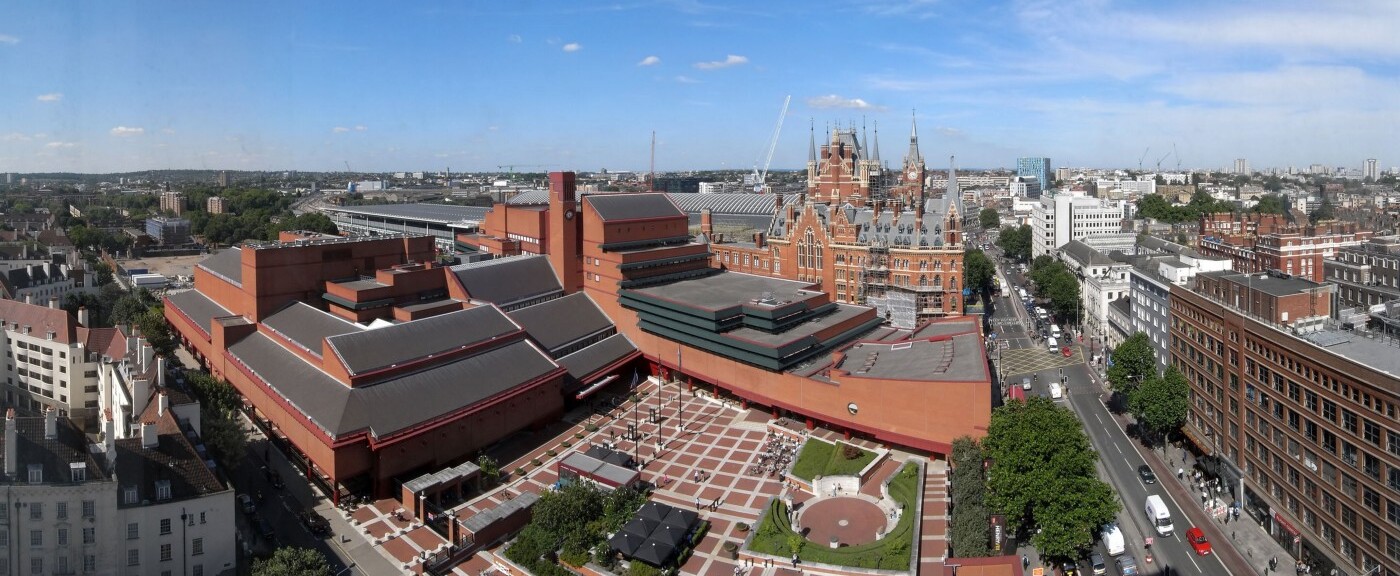Xin Wen, PhD student in Inner Asian and Altaic Studies, describes a summer in the British Library’s Asian and African Studies center, and how he might be an academic Spiderman…

It takes about ten minutes to walk from my residence on Pentonville Road near Islington to the British Library on Euston Road. In these ten minutes, I pass by two Turkish kebab places, a Starbucks and a Costa Café, the King’s Cross Train Station, and the magnificent 270-feet tall St. Pancras Hotel building constructed in 1873. And of course, people. Lots of people. In my daily morning walk to the British Library, I have to fight my way through well suited up professionals, red-eyed tourists, passionate volunteers trying to convince you to donate for a cause, and homeless people sleeping next to stands of the London Evening Standard.
It is the brassy, loud, and completely disorienting center of London. Yet, when I walk through it, take the elevator to third floor, and order my manuscripts at the reading room for “Asian and African Studies” at the British Library, I find that the world I am trying to uncover no less disorienting. Manuscripts come in different sizes, different languages, and, most frustratingly, different states of preservation.
One “item” might be a 15-meter long, complete, and beautifully written Buddhist sutra. Another might be a piece of tattered paper smaller than your palm, with three lines of undecipherable traces on it. Both are difficult to accommodate in the 30 minutes I usually allocate to each item. More often, you have something of moderate length and difficulty that you are able to examine thoroughly.

Most interestingly, you sometimes see things that are not visible in photographs. A hidden piece of paper in a small booklet reveals that the second half of the booklet was from a different paper, offering the possibility of understanding the making of this type of manuscript. A third of a line of Chinese writing still extant from a patch paper on the back of a Buddhist text might tell us the date of the death of a Khotanese king. An ordinary looking sutra turns out to have been written horizontally (in relation to the laid lines on the paper), indicating that it used Central Asian rather than Chinese papers. The realization that some of these observations are being made for the first time makes the equally crowded, and often hotter, walk back home in the afternoon so much more pleasant.
I once had doubts about the necessity of coming to the British Library when many of their manuscripts are already digitized and available online. But Susan Whitfield, the director of the International Dunhuang Project at the British Library, quickly interrupted me when I said: “lots of people think that you can just read the manuscripts online.” “Of course not,” she was very firm. And she was probably right.
In the process of handling these manuscripts, all of which are more than one thousand years old, I confirmed my previous suspicion that a set of large papers in the Dunhuang collection were originally from the Central Asian kingdom of Khotan. My examination of manuscripts in codex forms indicates that they were made from standard panels of paper used for scrolls. In these coarsely made and little studied codex booklets lies the key to unlocking the unexplored history of the transformation of Chinese books from hand-written scrolls to printed codex. A first contribution to this broader project will be an article on the making of booklets in Dunhuang that I promised Susan to write for the Newsletter of the International Dunhuang Project. Another promise, a book on the history of Khotan, will take many more years to fulfill.

My offer of contribution excited Susan a great deal. But equally exciting for me was her proposal that the mysterious “middle numeral” in the marks by Aural Stein — the explorer-cum-archaeologist who brought manuscripts from China to the UK — might mean the original blankets for the manuscripts. This, if proven to be the case, would help reconstruct the Dunhuang library in ways that have not been possible so far.
Of course, not everything went exactly according my plan. I did not, for instance, plan on staying indoors for my first week battling a severe cold and a curiously tricky jetlag. But even the most annoying and minor surprises can turn into something positive. After looking perhaps over-intensely at the manuscript numbered Or.8210/S.1475 (Or. stands for “Oriental”, S. stands for Aurel Stein) — a list of seventeen contracts written by Chinese residents of Dunhuang under the rule of the Tibetan Empire in the 820s — I shared what accidentally happened to me in the process on Facebook on the 18th of August:
Ugg, paper cut from a 9th century manuscript. I hope I don’t turn into a Zombie…
To this my friend and historian of Japan and Korea Hannah Shepherd commented:
This could be like an academic version of Spiderman.
It could be.


